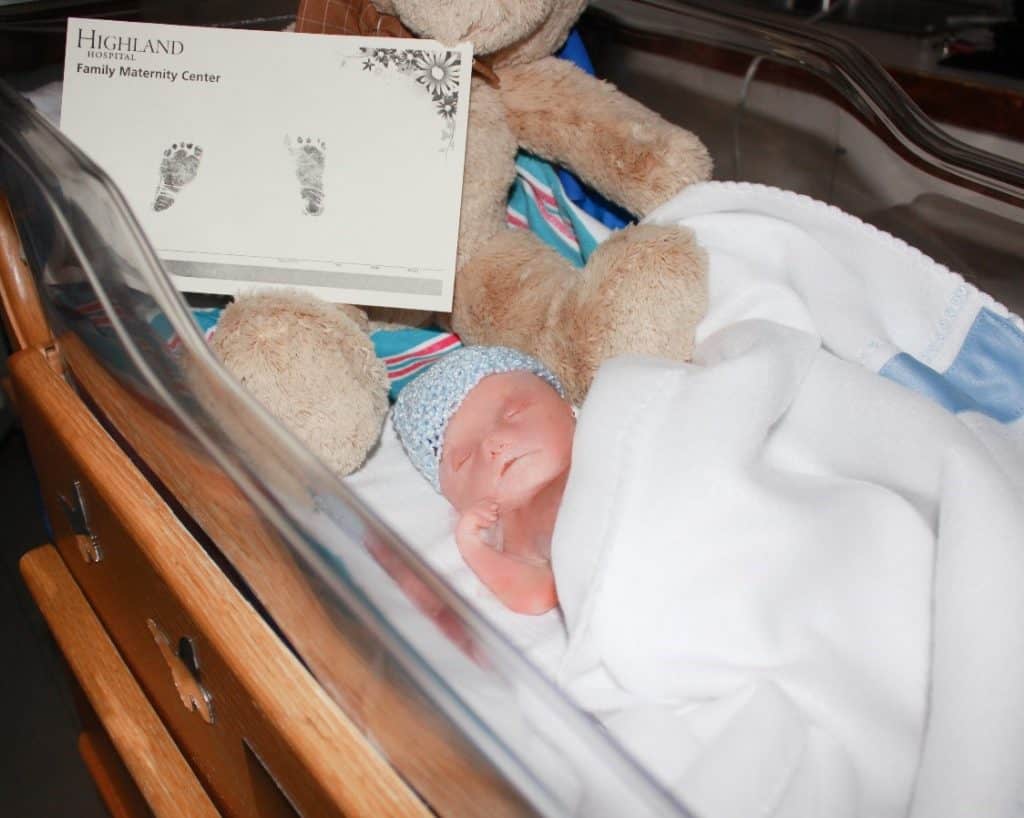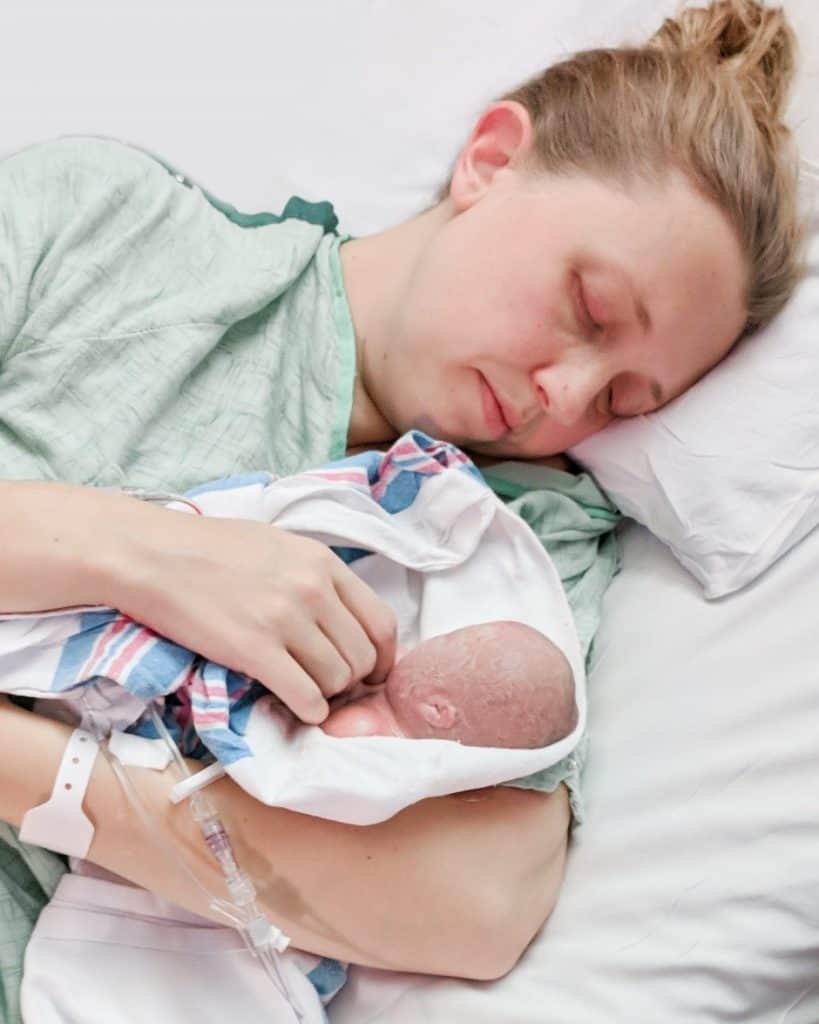We found out we were pregnant on May 3rd, 2018. After a previous miscarriage at 11 weeks we didn’t get our hopes up. We knew the stats; one in four pregnancies end in loss. So, we didn’t immediately celebrate. But the weeks ticked on and before we knew it, we were at our 20-week ultrasound. A healthy boy. We breezed through all check-ups, no issues were detected in our 1st or 2nd trimester scans. At that point it started to become real to us, our rainbow baby was on his way.
Friday, September 28th at 26 weeks I went to a monthly check up. I raised concerns to my doctor-of-the-day that he didn’t move very much. I was told that it was still early and that he “just might not be an active baby”. She measured my belly, listened to his heartbeat, and within five minutes I was on my way. I texted my husband from the parking lot “Everything is good with the baby!” That appointment was the last time I know for sure that our son was alive.
Monday, October 1st I called my doctor after feeling little to no activity through the weekend. I left a couple messages in the morning. When I did get a hold of someone, I was told to do a kick count and call them back. I protested and said, “there will be no kicks, he’s not moving”. They said do it anyway and call them back. One grape juice and no kicks later I called them back and was sent to the hospital for a non-stress test. Walking into the hospital my husband was concerned, but there was not a doubt in my mind that our son was fine. Death of a healthy baby at nearly 27 weeks was not something that was on my radar.

After three different people entered and quickly exited our room saying, “let me get someone else”, a team including the head of labor and delivery arrived to inform us that our son had died. At this time we were also told he was measuring small (24 weeks), there was swelling in his abdomen, and it “looked like he had been struggling”. We were of course blindsided by all of this information, we had just aced a monthly check up. Within an hour we were given a pill to soften my cervix and sent home to return in 24 hours to be induced.
On Wednesday October 3rd Richard Christopher Karpen was born at 5:02 AM weighing 1 lb. and 14 oz. He had long legs, tiny hands and feet, and a big head. The first miniature hat that we chose for him was too small, we had to get another. We spent the remainder of the morning with him, taking visits from family. I gave him what I hope was a lifetime of love in six hours. Hundreds of little kisses for all of the firsts that he would never get. I told him that I was sorry, that I would love him forever, and then said the most impossible goodbye.
After an autopsy, placental pathology, and dozens of other tests, no cause of death was found. We sat through hours of appointments only to have long conversations with people who were seemingly as confused as we were. Two healthy people with a healthy child at home and no family history of issues or complications, they were speechless. During this time two different people gave us two different possible explanations for his death, neither of which were actually true. Underactive thyroid (high TSH) and circummarginate cord insertion. While both of these minor issues were indeed discovered, neither caused Richard’s death. They were grasping at straws and it wasn’t helpful. We scheduled a follow up at the hospital we delivered him at and were finally told that absolutely nothing noteworthy was found. We were one of the many who would never get an explanation for their child’s death.
We were referred to a genetic counselor who recommended genetic testing for my husband and me. She also mentioned a last resort test we could have done on some of Richard’s cells from the autopsy, a micro-array. The amniocentesis had been inconclusive as they were not able to get any of his cells to grow for chromosomal testing. The micro-array would give us our first and only look at his genetic makeup. On January 3rd, exactly 3 months after Richard was born, we were told that Richard’s micro-array results were consistent with Downs syndrome. These results were confirmed by a couple physical characteristics from his autopsy that were also suggestive of Downs syndrome, a single palmar crease and an enlarged liver. We also found out that both my husband and I’s genetics were normal, and Richard’s extra chromosome was not due to an inherited translocation, but a completely sporadic event.

Before Richard died, I was embarrassingly uneducated about stillbirth. I didn’t really give any thought as to what it was, and that it still happened. When expecting our first child 3 years earlier my husband and I took a full course load of prenatal and baby care classes. We learned all about 24-week viability, preeclampsia and pre-term labor, and the ‘back to sleep’ initiative for SIDS prevention. We were repeatedly instructed not to shake our baby. But stillbirth was never mentioned, not once. I learned the warning signs for stillbirth after I had a stillbirth. It’s very likely that all the medical intervention in the world would not have saved Richard. But some stillbirths can be prevented, and we need better care and support for the ones that can’t. In our case, and unfortunately many others, a severe lack of communication and support existed.
For the past year we have been learning how to parent Richard without physically being with him. He is very much part of our family and always will be. He will forever be my rainbow baby, my daughter’s little brother, my elephant in the room, my rock. For six months he was the ray of hope our family so desperately needed after so much loss. In sharing Richard’s story I hope to educate others about stillbirth, as well as let other bereaved parents know that they are not alone. For me, sharing his story is a big part of being his mom.
I also share his story for slightly selfish reasons. I love talking about my baby. Every mother does. But I quickly learned that many people don’t love hearing about my baby. Our society is obsessed with pregnancy and birth, but only if the baby lives. 1 in 160 don’t live. There is no valid reason for so much silence around this topic. We can do better. Stillbirth is still birth. The first thing Richard taught me in the adrenaline filled moments after his birth is that the love a parent feels for their child is not dependent on whether they are dead or alive. As my arms reached out to instinctively pull him to my chest there were no tears, no sadness, no fear; just love. Visceral and instantaneous love.
